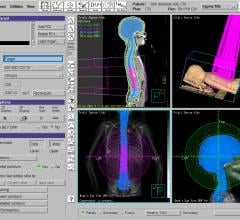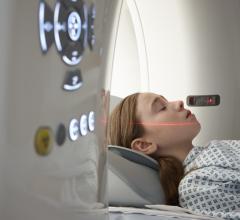June 5, 2013 — Loma Linda University Medical Center (LLUMC) currently has openings in eight clinical trials for patients with certain types of cancers of the breast, prostate, liver, esophagus and pancreas as well as those with soft-tissue sarcoma. All of the trials involve the use of proton therapy and are approved by the Institutional Review Board, the independent national committee that oversees such trials.
The use of proton beam radiation as a cancer treatment was developed and brought to use by scientists at LLUMC more than 20 years ago. Since that time Loma Linda’s Proton Treatment and Research Center has cared for more than 15,000 cancer patients, making it the most dynamic proton treatment center in the world.
“The ongoing study of proton therapy helps to enhance patient care and furthers the technology as the premiere radiation treatment modality for cancer and other diseases,” said Jerry D. Slater, M.D., chairman of the LLUMC Proton Treatment and Research Center. “Our clinical research studies provide us with the platforms to improve existing cancer treatment protocols and develop new protocols to treat other diseases.”
The proton beam’s structure makes it the most precise form of radiation. Its pinpoint accuracy allows proton beams to target a specific area while sparing surrounding healthy tissue. “We are continually looking at increasing proton treatment’s safety and reducing its side effects in comparison to other forms of radiation therapy, with the ultimate goal to improve and streamline treatment strategies,” Slater said.
Current trials to which qualified patients can join include:
- Breast Cancer — Building upon an earlier successful breast cancer trial, this study looks at patients with slightly higher risk factors to determine if the same excellent results in disease control and freedom from side effects can be achieved. Principal investigator: David A. Bush, M.D. For more information: http://tiny.cc/7z6mvw.
- Esophageal Cancer — This trial studies whether a combination of chemotherapy can work with a low proton dose to control disease and prolong survival. Principal investigator: Gary Yang, M.D. For more information: http://tiny.cc/a86mvw.
- Liver Cancer — Proton treatment at LLUMC is effective in reducing tumors in liver cancers that meet Milan and San Francisco criteria. Currently TACE is a standard treatment for these patients. This study compares proton therapy outcomes with results in patients treated with TACE with the hopes of potentially improving overall treatment outcomes. Principal investigators: David A. Bush, M.D., and Michael De Vera, M.D. For more information: http://tiny.cc/i56mvw.
- Liver Cancer — Sorafenib is a standard chemotherapy for treating patients with advanced liver cancers. This study will determine if adding proton therapy to that chemotherapy can significantly reduce tumors. Principal investigators: David A. Bush, M.D., and Michael De Vera, M.D. For more information: http://tiny.cc/i66mvw.
- Liver Cancer — For tumors that have metastasized to the liver and cannot be treated with surgery, aggressive radiotherapy can also prolong survival. Proton therapy can potentially improve clinical outcomes with less morbidity. This trial studies the feasibility and safety of using protons for isolated liver metastases. Principal investigator: Gary Yang, M.D. For more information: http://tiny.cc/mc7mvw.
- Pancreatic Cancer — Pancreatic cancer when diagnosed typically is advanced making chemotherapy and conventional radiation more difficult to use. This study will research whether a limited proton dose can reduce tumors, minimize side effects, and make chemotherapy more effective. Principal investigator: Gary Yang, M.D. For more information: http://tiny.cc/f76mvw.
- Prostate Cancer — Proton treatments at LLUMC have long been successful controlling disease and reducing side effects for prostate cancer patients. This study looks at shortening treatment time in half from eight to four weeks. Principal investigator: Jerry D. Slater, M.D. For more information: http://tiny.cc/b46mvw.
- Soft Tissue Sarcoma — Surgery is the preferred method of controlling soft-tissue sarcomas, and standard radiation may be used to reduce tumors so surgery is more effective. However, radiation-injured normal tissue can compromise surgery. This trial will look at whether proton therapy, by sparing more normal tissue, can increase surgery’s effectiveness. Principal investigator: Gary Yang, M.D. For more information: http://tiny.cc/4a7mvw.
For more information: www.lomalindahealth.org


 July 25, 2024
July 25, 2024 








